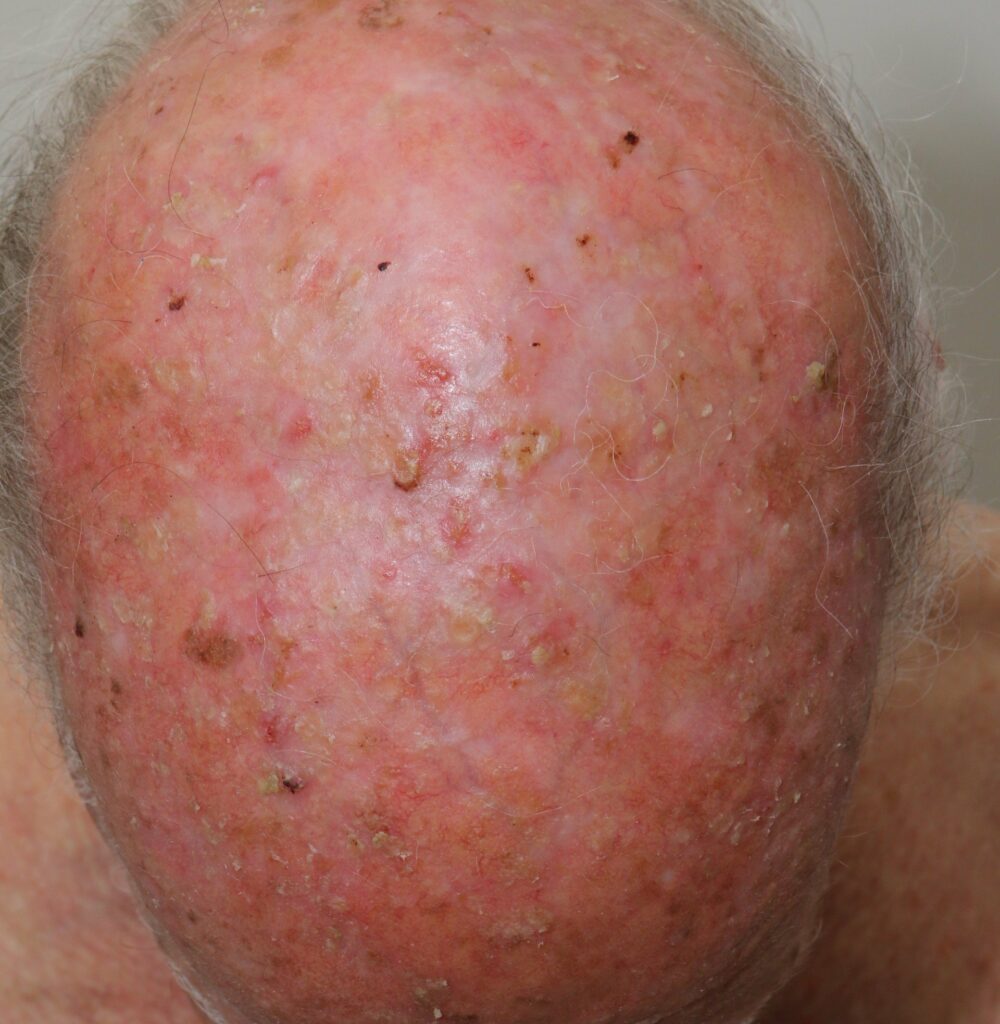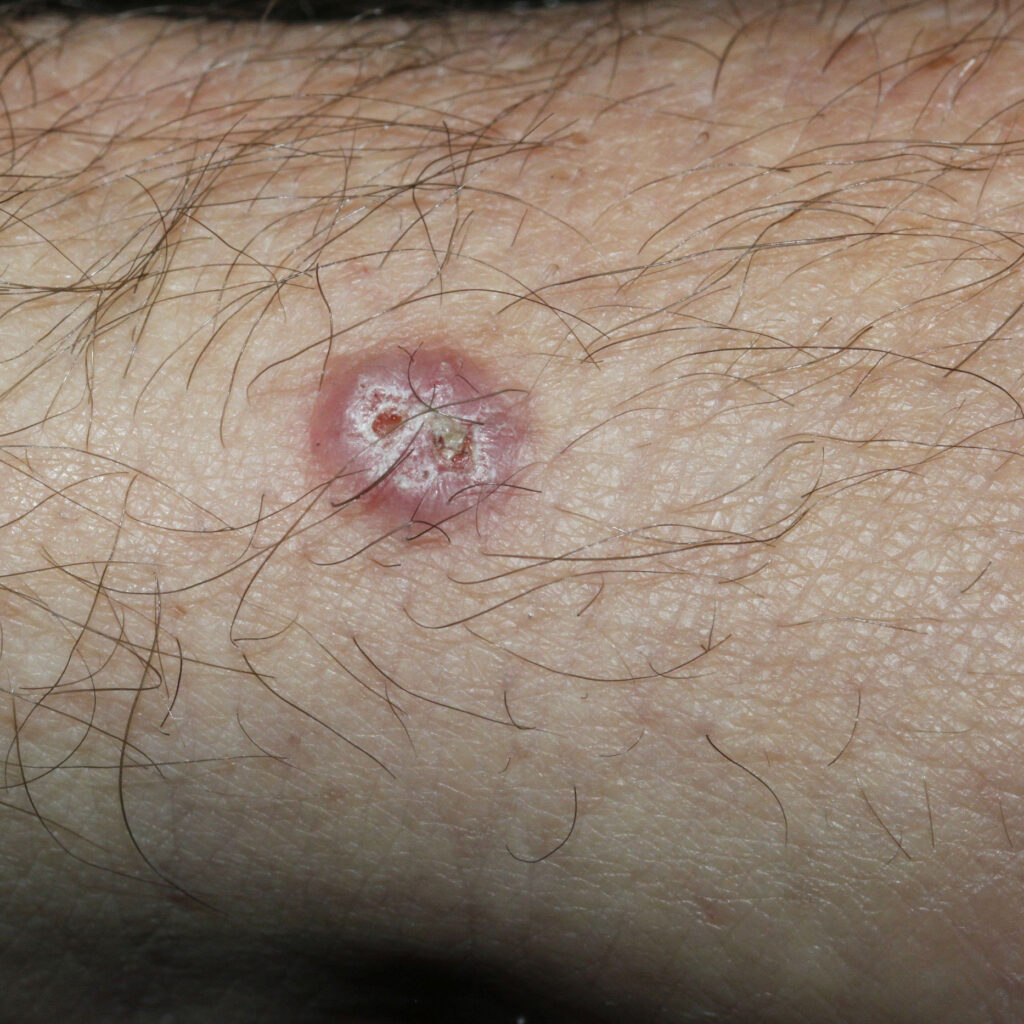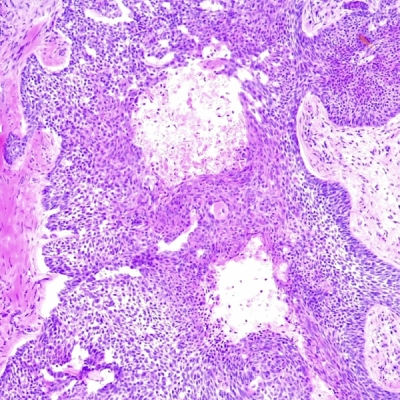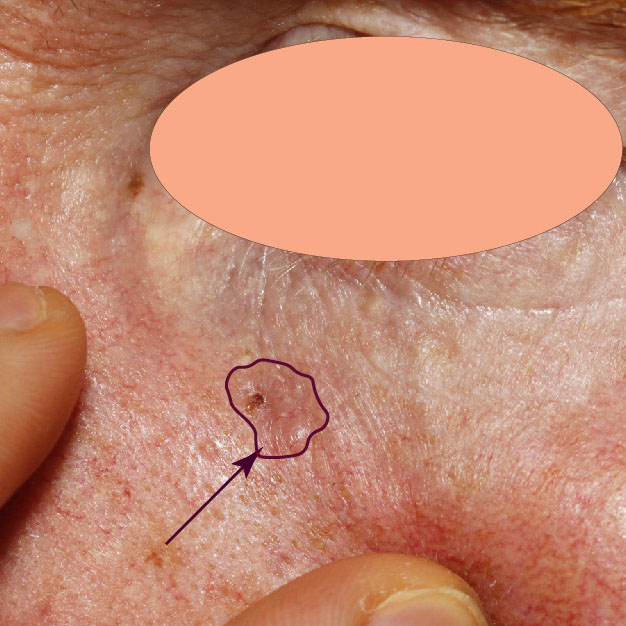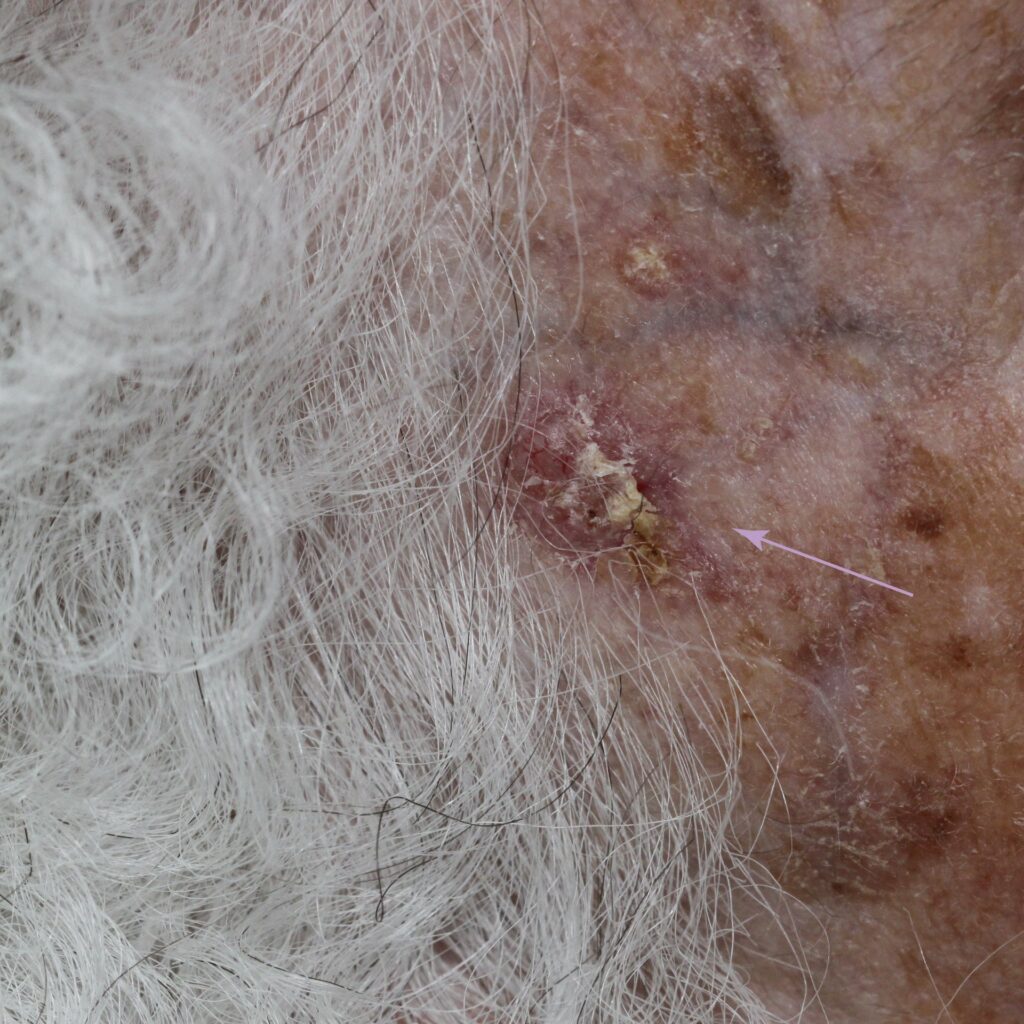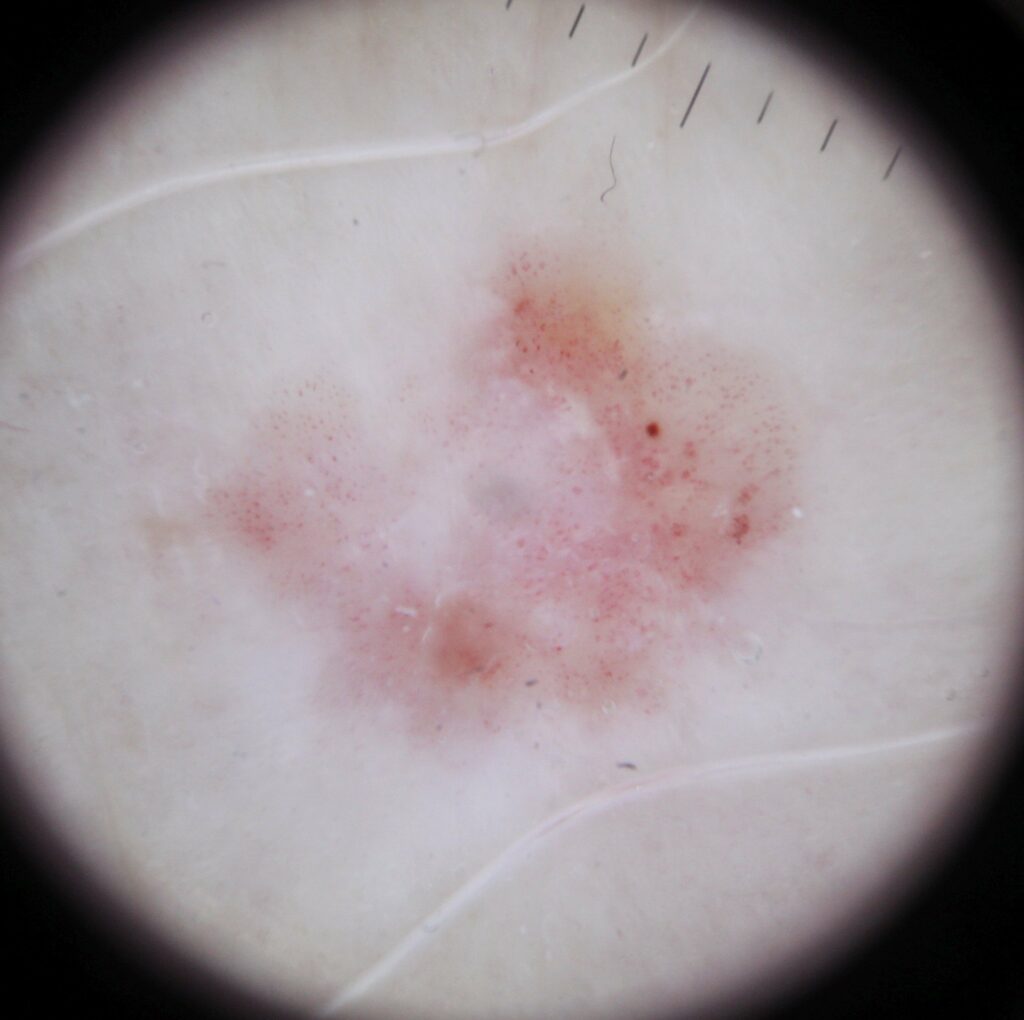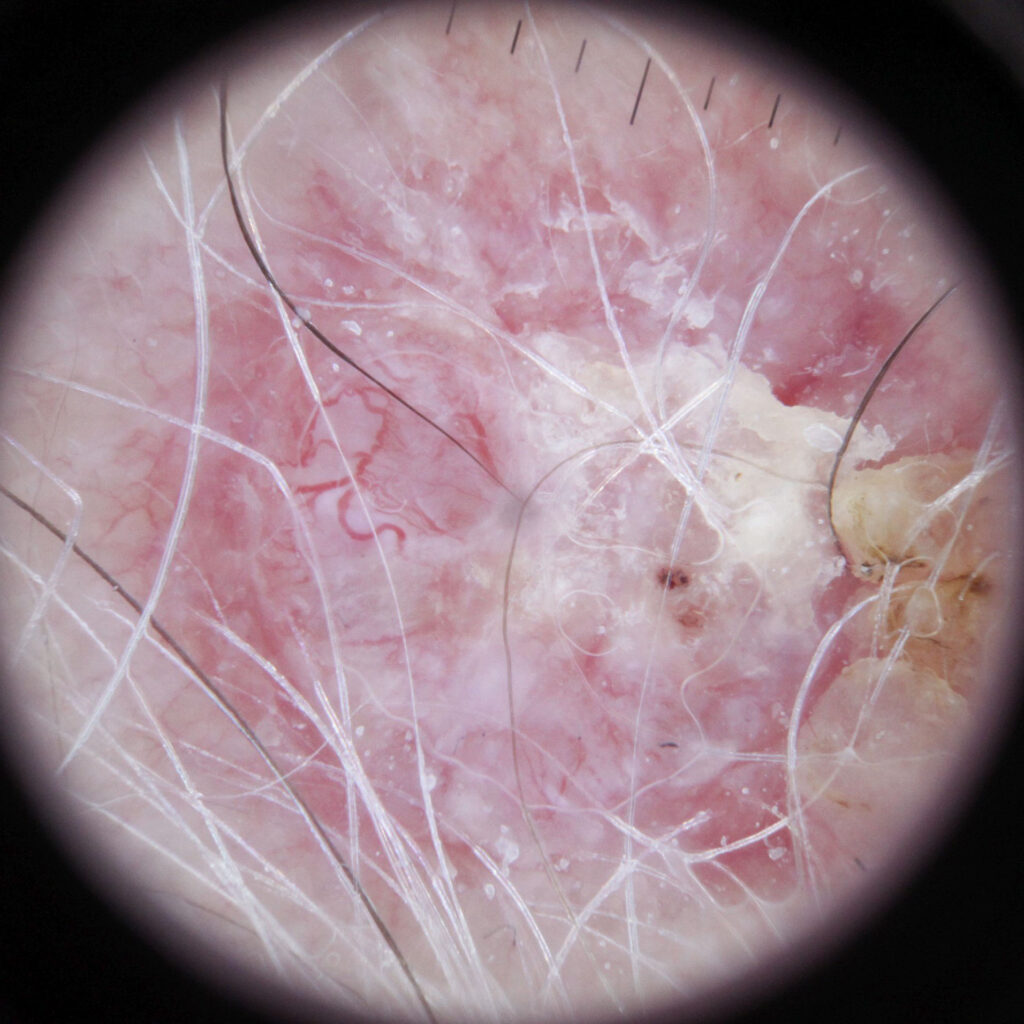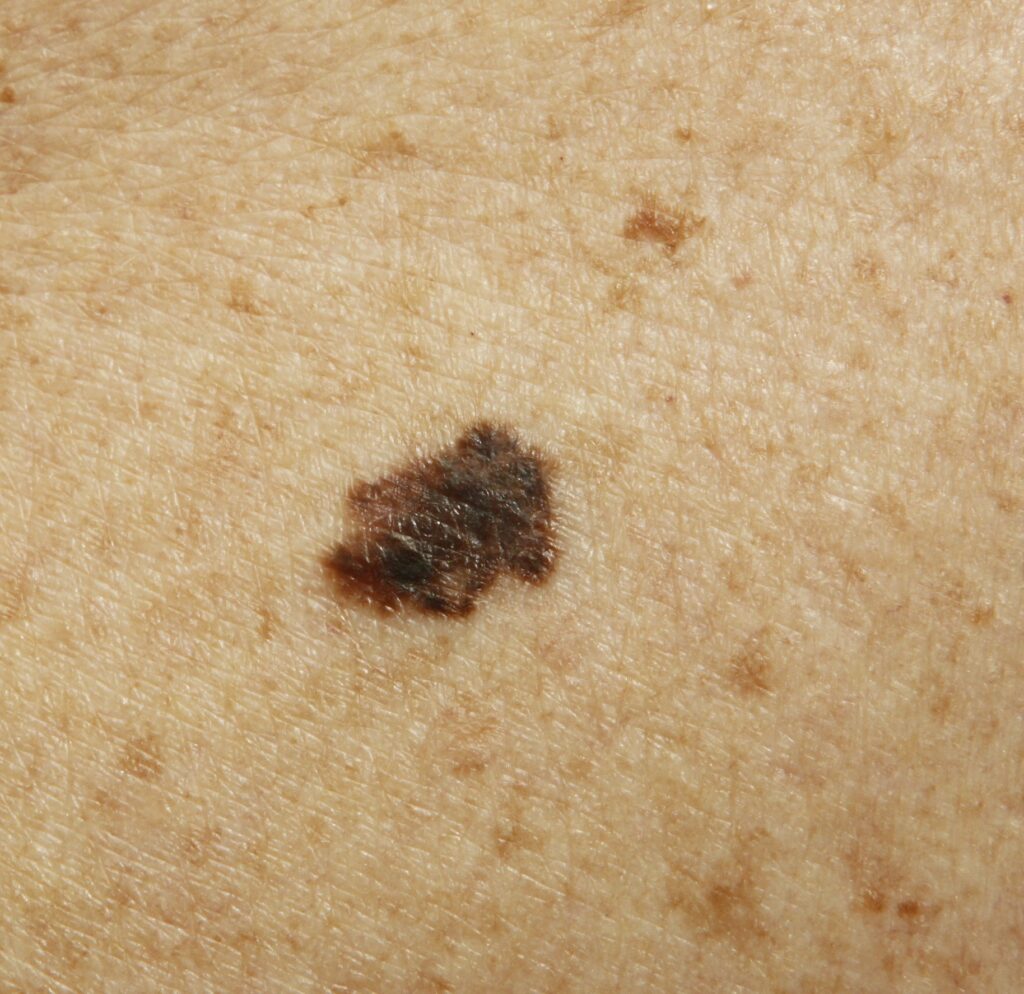There are numerous types of skin cancer. We have more detailed information on the most common skin cancers in our definitive guides:
Other types of skin cancers are much less common.
Skin cancers can occur anywhere on the body – including “where the sun doesn’t shine,” but they are most common in areas with the most sun exposure such as the face, neck, arms, and head. Depending on lifestyles, some people will commonly get skin cancers on the legs and trunk.
Development
The skin is our largest organ and has an important role in protecting us from the environment with which we interact. It protects us from heat & cold, sunlight, infection, and injury. The skin has multiple layers, however, the key layers are the epidermis (superficial) and the dermis (deeper).
The key cells that make up the epidermis are:
- Squamous cells make up most of the epidermis and exist on the surface of the skin.
- Basal cells are found at the bottom of the epidermis, underneath the squamous cells.
- Melanocytes are the pigment (melanin) forming cells that give us our skin colour. After exposure to sunlight, melanocytes produce more melanin resulting in a tan.
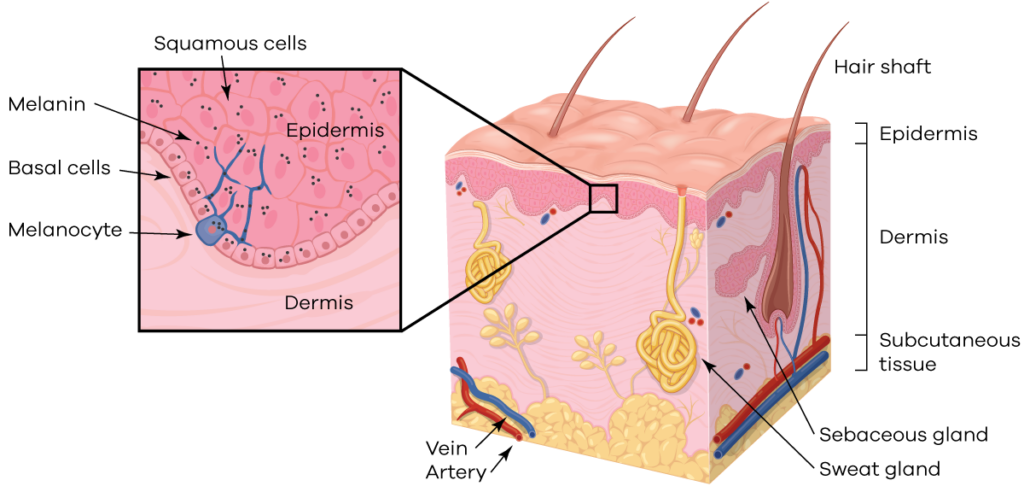
When any of these types of cells turn cancerous, they give rise to their respective cancers – basal cell carcinomas, squamous cell carcinomas, and melanoma.
Broadly speaking, if skin cancers are detected early and are still confined within the epidermis they are much simpler to treat and invasive treatments can often be avoided.
Causes and risk factors
There are numerous risk factors for cancer development on the skin, however, the most important are:
- Ultraviolet (UV) radiation – this includes sunlight exposure, sunbeds, previous radiation treatment, arc welders, and some nail salon treatments.
- Age – generally the older you get, the higher the risk of cancer on the skin.
- Skin colour – those with fairer skin have a higher risk of developing it, however, it can still occur in those with pigmented skin.
- Having a weakened immune system – including those on immunosuppressive medications for organ transplants.
- Genetics – a strong family history is associated with a higher risk for certain skin cancers, such as melanoma.

Of these, the one risk factor that people can minimise going forward is of course their exposure to UV radiation. Our sun protection page discusses what you can do to reduce your risk of developing cancerous skin.
Types of Skin Cancer
The most common types on the skin are:
There are multiple other types of skin cancer that are much less common including:
- Dermatofibrosarcoma protuberans (DFSP)
- Atypical fibroxanthoma (AFX)
- Merkel cell carcinoma (MCC)
- Kaposi sarcoma (KS)
- Sebaceous gland carcinoma
- Cutaneous T-cell lymphoma (CTCL)
Gallery of skin cancer images
